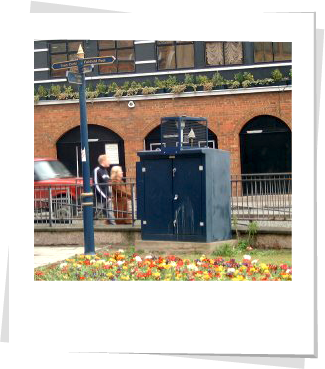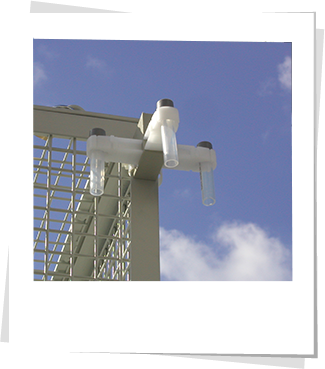Measuring air pollution
Air quality is measured across the UK at many locations. Locally in Kent we have a network of sites that make up the Kent and Medway Air Quality network.
Find out where your nearest monitoring site is on the My Local Area page or more detailed information can be found on the main website for Kent and Medway Air Quality network, KentAir.
There are a number of ways to measure what is in air three main ways to measure pollutants which we will look at:
Automatic Monitoring
 Automatic monitoring is the most sophisticated method of monitoring air pollution, but is also generally the most expensive! Monitoring sites in the Kent and Medway Air Quality network use automatic monitoring techniques.
Automatic monitoring is the most sophisticated method of monitoring air pollution, but is also generally the most expensive! Monitoring sites in the Kent and Medway Air Quality network use automatic monitoring techniques.
- Automatic sites operate 24 hours a day, continuously measuring pollutants
- Automatic monitoring sites calculate the concentration of the chosen pollutant by pulling ambient air through the analyser via the inlet
- Different analysers are used to measure each pollutant. For example a site may have 3 analysers; 1 measuring NOx, 1 measuring ozone and 1 measuring particles (such as PM10)
- The data from the site is collected by a computer which means the concentrations can be seen virtually in real time from the site or when the data is collected. The most recent data from the Kent and Medway Air Quality network can be found at: https://care-for-air.kentair.org.uk/latest/. The speed of getting data on air quality is the main difference between automatic and non- automatic measurement
Non-automatic Monitoring - Passive Monitoring
 Passive monitoring is normally a simple and inexpensive monitoring technique to measure gas concentrations using diffusion tubes. It does not require electricity or the use of pumps like the automatic and non-automatic active monitoring methods.
Passive monitoring is normally a simple and inexpensive monitoring technique to measure gas concentrations using diffusion tubes. It does not require electricity or the use of pumps like the automatic and non-automatic active monitoring methods.
Data from the automatic monitoring network in the Kent and Medway Air Quality are backed up by NO2 diffusion tubes.
- Diffusion tubes are small plastic tubes with a single cap at the top when exposed. You might have seen some strapped to some lampposts!
- Diffusion tubes normally monitor for 2-4 weeks at a time
- Under the cap at the top is a mesh disc which is coated with a chemical that absorbs NO2 or SO2 or other gasses depending on what is being measured. The bottom cap is removed when sampling to allow air to flow inside the tube then is closed and sent for analysis after the exposure period
- When gases pass over the mesh, the compound inside the tube changes
- The tubes must be sent to a laboratory for analysis to see how much NO2 or SO2 they have detected (NO2 or SO2) was in the air then using assumptions an estimate of air concentrations can be reported
- Non-automatic monitoring methods are usually lower cost than automatic monitoring methods but are generally less accurate and the averaging periods are greater therefore day to day trends cannot be observed
Non-automatic Monitoring - Active Monitoring
No active monitoring is currently undertaken in Kent and Medway Air Quality Monitoring Network, these methods are usually undertaken in national monitoring networks or short term studies for the measurement of more complex elements or compounds not easily measured by automatic analysers such as metals or more complex compounds.
- Non-automatic active monitoring methods use physical or chemical methods to collect air which is then sent to a laboratory for analysis
- Usually, a known volume of air is pumped through a filter, a tube or a chemical solution for a known period of time
- Many filter samplers of this type are able to hold several days' or weeks' worth of filters, and to change them automatically at a set time
- The collector is then removed and sent for analysis
- Samples can be collected as regularly as needed but generally not as frequently as automatic monitoring
- The cost of this technique depends on the cost of measuring the chemical compound/element in the sample
